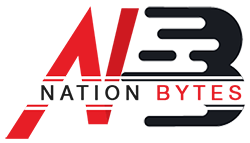How to Check a Used Car in 10 Minutes
Buying a used car can be a smart move, but only if you know what to look for.

A quick inspection can save you from expensive repairs, hidden damage, or even legal trouble. Here’s a step-by-step breakdown to make sure your next car is worth the investment.
1. Exterior & Body Checks
-
Uneven gaps between panels (may signal past accidents)
-
Mismatched paint colors
-
Dents or scratches that could indicate neglect
-
Panel alignment doors, trunk, and bonnet should close smoothly
Run your hand lightly across the surface to detect hidden filler spots. For those buying a used car in Pakistan, visual clues can reveal whether the car has seen major damage or has been repainted to hide repairs.

2. Tires, Headlights & Rust Inspection
Next up, check the tires. Uneven wear could mean poor alignment or suspension issues. Tread depth should be consistent across all tires use a coin to measure if needed.
-
Headlights and taillights: Cracks or fogginess can be costly to fix.
-
Underbody and wheel wells: Look for rust, especially near joints.
Rust is often a dealbreaker in older cars, especially in humid or coastal areas of Pakistan. A good used car inspection guide always includes this step.

3. Engine Sound Test
Start the car and listen. The engine should fire up without hesitation and run smoothly. Pay attention to:
-
Knocking, tapping, or grinding sounds
-
Excessive vibration
-
Smoke from the exhaust (blue or white is bad news)
Rev the engine slightly any abnormal noises are a red flag. For anyone buying a used car in Pakistan, engine issues are the most expensive to fix, so don’t skip this test.

4. Dashboard & Warning Lights
Once the engine is running, look at the dashboard:
-
Make sure all warning lights turn on briefly at startup and then go off
-
Persistent lights like check engine, ABS, or airbag signals a hidden problem
-
Flickering lights or faulty meters can indicate electrical issues
Your used car inspection guide must include this because sellers sometimes disconnect warning lights to fool buyers.

5. Paperwork & Token Check
Don't fall for the trap of a clean-looking car with dirty papers.
-
Registration book: Name, chassis number, engine number must match the vehicle
-
Token tax: Is it paid up to date? Delayed tokens may cost you penalties
-
Car insurance papers: Expiry and claim history
For those buying a used car in Pakistan, paperwork is where many frauds happen. Never agree to a deal without full documentation.

6. Apps to Verify Owner & History
Technology can now do a lot of the legwork for you. Use these apps to get the real story:
-
MTMIS (Punjab, Sindh, KPK): Enter plate number to check registration, token tax status, and owner details
-
PakWheels Car Inspection Report: Shows previous inspections and expert ratings
-
CARINFO App: Helps verify chassis, engine number, and accident history
If you’re buying through a marketplace, this step is crucial. A good used car inspection guide always includes tech tools to verify ownership and history before money changes hands.

7. Exterior Accessories
-
Assess the condition of side mirrors, door handles, and other exterior accessories.
-
Make sure all accessories are securely attached and functioning properly.
-
Look for signs of damage or wear on wipers and antennae.

Final Thoughts
Don’t rush into a car deal just because it “looks good.” Whether you're a first-time buyer or upgrading your ride, following this used car inspection guide gives you confidence and bargaining power.
Especially if you're buying a used car in Pakistan, where the second-hand market is booming, these 10-minute checks can protect you from costly mistakes. When in doubt, walk away—there are always more options.

 sana Irshad
sana Irshad